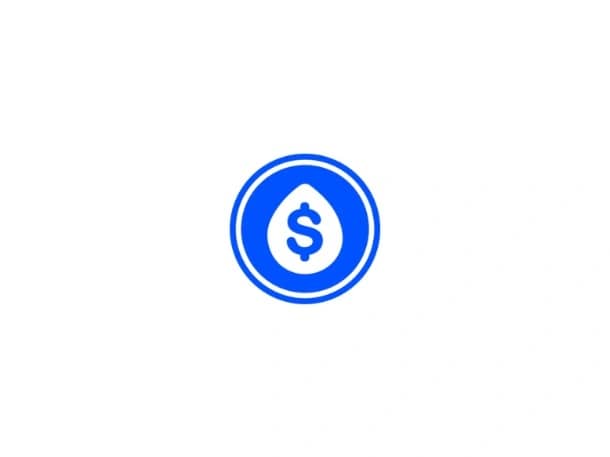订阅 wiki
Share wiki
Bookmark
USDH
USDH
USDH 是一种原生的、与美元挂钩的稳定币,于2025年9月24日在Hyperliquid去中心化交易所生态系统上推出。[17] 经过竞标流程后,Native Markets被选中发行该稳定币,此前该公司赢得了网络验证者的链上投票。[16]
概述
创建 USDH 的动因是 Hyperliquid 的战略目标,即实现价值内部化,增强协议主权,并降低因依赖外部桥接稳定币而产生的安全风险。 [7] 在提案之前,Hyperliquid 平台持有约 59 亿美元的 USDC,约占该稳定币总供应量的 7.5%。 [8] [12] 支持这笔资金的美国国债储备所产生的收益完全流向了 USDC 的发行方 Circle,导致 Hyperliquid 生态系统每年损失约 1.5 亿至 2.2 亿美元的收入。这种现象被认为是显著的“价值泄漏”。 [1]
此外,依赖像 USDC 这样中心化的、需要许可的资产,使 Hyperliquid 面临潜在的审查和资产冻结风险,这与其作为无需许可金融系统运营的目标相冲突。使用桥接资产也引入了额外的安全风险,而原生稳定币可以消除这种风险。为了应对这一举措,Circle 宣布计划在 Hyperliquid 上部署原生 USDC,并启用其跨链传输协议 (CCTP),以与新推出的 USDH 竞争并保持其市场份额。USDH 的选择过程被视为在稳定币市场中开创了一个新的先例,将动态从发行方提供产品转变为提供服务,他们必须在与宿主生态系统共享价值方面展开竞争。 [1]
发行方选择流程
Hyperliquid 选择了竞标流程来选择 USDH 的发行方,邀请已建立的稳定币公司和新团队在 2025 年 9 月 10 日之前提交提案。 [8] [13] 声明的目标是找到一个“以 Hyperliquid 为先、与 Hyperliquid 对齐且合规”的资产。 [9] 获胜提案由 Hyperliquid 网络的验证者通过透明的链上加权投票决定,投票于 2025 年 9 月 14 日结束。Native Markets 赢得了竞标,获得了 66% 的最终投票,而亚军 Paxos 获得了 28% 的选票。 [16] [1] [8] [13]
为了确保中立性和社区影响力,Hyperliquid 基金会 承诺放弃投票。HYPE 代币持有者被鼓励将其质押代币委托给其选择与他们的偏好相符的验证者,从而影响结果。在 2025 年 9 月 11 日的一项重大治理变更中,Hyperliquid 宣布已将其团队质押的 HYPE 代币从投票的验证者加权计算中移除。此举旨在创建一个“纯粹的治理结构”,减少内部人士的影响,并赋予社区代币持有者更大的控制权。该决定直接影响了投票的动态,将领先竞争者 Native Markets 的投票权重从 75% 降低到 66%,并增加了 Paxos 赢得竞标的可能性。 [2] [12]
争议
公告和竞标过程引发了一些争议。Hyperstable 协议,一个现有的 稳定币 项目,在 Hyperliquid 上,称该过程“不公平”。该项目的代表声称,USDH 代码之前已被 Hyperliquid 基金会 列入黑名单,迫使他们的团队使用 USH 代码代替。他们认为,在其他项目已经启动后改变这一政策是在改变游戏规则。 [9]
关于 Native Markets 提案也引发了对不正当行为的怀疑。一些社区成员注意到,该提案是在官方公告发布仅一个多小时后提交的,但内容冗长且经过深思熟虑,这表明该团队可能已经得到了“提示”。进一步的审查显示,Native Markets 的部署者地址是由一个新创建的钱包资助的,而该钱包本身仅在公告发布前五个小时才获得资助,这引发了人们对该团队是否独立于 Hyperliquid 基金会 的质疑。 [9] Dragonfly 的联合创始人 Haseeb Qureshi 称该过程“有点像闹剧”,他认为内部人士似乎已经确定 Native Markets 将获胜。OAK Research 的首席运营官 Lilian Aliaga 也表示“存在偏见”,她质疑像 Native Markets 这样的新手如何能如此迅速地获得大多数 验证者 的支持。 [12]
竞争提案
最初有八个团队提交了发行USDH的提案,一个关键的区别因素是收益分成模式。大多数竞标者承诺将稳定币储备产生的大部分份额返还给Hyperliquid生态系统,主要通过回购原生HYPE代币。 [12]
Paxos
Paxos是一家著名的稳定币发行商,得到了PayPal的支持,于2025年9月7日提交了一份关于法定货币抵押的USDH的提案。该计划由其最近成立的Paxos Labs实体领导,该实体收购了基础设施公司Molecular Labs(Hyperliquid基元LHYPE和WHLP的开发者),以加深其对生态系统链上架构的理解。该稳定币将由美国国债和回购协议支持。该公司承诺将储备金产生的95%的利息用于HYPE回购,将价值重新分配给用户、验证者和合作伙伴协议,在总锁定价值(TVL)达到10亿美元之前不收取任何费用。该提案强调,其稳定币将符合新兴法规,如美国的GENIUS法案和欧盟的MiCA框架,旨在将Hyperliquid连接到全球银行轨道,并使其对机构和金融科技平台更具吸引力。它将以原生方式部署在HyperEVM和HyperCore上。Paxos还承诺从USDC到USDH的零费用过渡,并计划在其经纪基础设施中增加对HYPE的支持,该基础设施为PayPal、Venmo和Interactive Brokers等平台提供支持。作为其投标的一部分,Paxos还宣布了Kraken交易所的一项提议,如果其提案被选中,将同时上市USDH和HYPE,这将为用户提供免费的链上和链下通道。 [1] [3] [8] [11] [14]
Ethena Labs
发行 USDe 稳定币 的 Ethena Labs 最初暗示将提交竞标。该公司后来提出了 USDH 的合成美元模型,该模型将由 USDtb 支持,USDtb 是一种与贝莱德 BUIDL(贝莱德美元机构数字流动性)基金相关的代币化证券,并得到合作伙伴 Anchorage Digital 和 Securitize 的支持。该提案包括将 95% 的净收入返还给 Hyperliquid 社区,承诺至少 7500 万美元的激励,并承担从 USDC 迁移流动性的所有成本。尽管一些市场分析师认为 Ethena Labs 是一个强大的竞争者,但该公司于 2025 年 9 月 11 日正式撤回了竞标。这一决定是为了回应社区和验证者的反馈,他们质疑该公司在生态系统中的定位,并表示更喜欢 Hyperliquid 原生团队。人们还担心运营多种产品的 Ethena Labs 可能拥有更广泛的雄心,可能不会完全符合 Hyperliquid 的利益。创始人 Guy Young 承认了社区的情绪,并赞扬了这一过程,他说:“这是一个 公平 的竞争环境,新兴参与者可以赢得社区的青睐,并获得公平的成功机会。”在宣布之后,根据预测市场,Native Markets 成为赢得发行合同的明显热门。 [8] [15] [3] [4] [6] [12]
Sky (前身为 MakerDAO)
Sky,USDS 和 Dai (DAI) 稳定币背后的协议,提出了一个由加密货币和现实世界资产混合支持的超额抵押的 USDH。与回购模式不同,Sky 提议向 Hyperliquid 平台上的所有 USDH 持有者提供 4.85% 的直接收益。该提案还包括 2500 万美元的赠款,用于资助一个致力于发展 Hyperliquid 上的 DeFi 生态系统的项目。联合创始人 Rune Christensen 表示,该稳定币 将通过与 LayerZero 协议的集成实现“原生多链”,并且可以由社区定制以符合美国法规。 [5] [1]
Agora
Agora是由 Nick van Eck 共同创立的一家公司,提议发行一种由法币抵押的稳定币,该稳定币由现金和短期美国国债支持,这些资产将由道富银行和 VanEck 管理的储备金持有。该提案的结构是一个联盟努力,涉及投资公司 VanEck、加密金融科技公司 MoonPay、链上/链下服务提供商 Rain 和互操作性协议 LayerZero 等合作伙伴。Agora 承诺将储备金产生的 100% 净收入通过 HYPE 回购或捐款给平台的援助基金,回流到 Hyperliquid 生态系统中。该公司将自己定位为一个中立的合作伙伴,没有竞争性的 Layer 1 区块链 利益,van Eck 用这一点来反对与 Stripe 相关的 Native Markets 提案。 [10] [8] [14]
Native Markets
Native Markets是由社区倡导者Max Fiege创立的团队,成员包括前Uniswap Labs总裁MC Lader和区块链研究员Anish Agnihotri。该团队率先提交提案,并被认为是领跑者,尤其是在Ethena退出后。该提案概述了符合GENIUS标准的、通过Stripe的“Bridge”支付处理器发行的法币抵押的USDH。储备金由现金和国债组成,将由贝莱德和Superstate监督。收入模式建议使用储备资产所赚取利息的50%来回购HYPE代币,另外50%用于资助USDH的增长。 [1] [3] [8] [14]
Frax Finance
Frax Finance,一个DeFi原生稳定币协议,提出了一个基于其frxUSD 稳定币的法币抵押模型来发行USDH,该稳定币由贝莱德的BUIDL基金支持。该提案没有明确具体的分成计划,但建议将储备资产赚取的利息用于提高HYPE 质押收益、进行HYPE代币回购,或为活跃交易者提供回扣,并奖励USDH持有者。该方案强调了Frax通过FraxNet现有的多链基础设施,这将为USDH提供即时的互操作性,并将该提案定位为“社区优先”。 [1] [8] [14]
启动和早期活动
USDH 稳定币于2025年9月24日正式在Hyperliquid 主网上线。[17] [18] 上线后,交易所HyperCore网络上新增了USDH/USDC现货市场。[19] 在最初的交易时段内,该稳定币的交易活动显著,交易量超过220万美元。[20] [17] 据发行方Native Markets称,在上线前的24小时内,预铸了超过1500万美元的USDH。[18]
市场影响和反响
USDH的竞标过程对市场产生了显著影响,特别是对Hyperliquid的原生代币HYPE。大多数提案都集中在使用储备收益回购HYPE,这导致该代币的价格在投票前夕屡创新高。该倡议被广泛视为对Circle的USDC主导地位的直接挑战,如果成功迁移,可能会从流通中移除超过50亿美元的USDC。 [1]
投票也吸引了加密行业知名人士的关注。Arthur Hayes,Maelstrom的联合创始人,被观察到在公司撤回之前大量购买Ethena的ENA代币,在投票当周购买了价值近100万美元的代币。虽然有些人将其解读为一种认可,但另一些人认为这是一种个人投资策略。根据预测市场Polymarket的数据,Native Markets被普遍看好赢得竞标,截至2025年9月11日,投注者给这家初创公司的胜算约为92%。数据显示,Native Markets持有超过30%的委托股份,而第二大竞争者Paxos持有7.6%。 [3] [12]
风险和考量
USDH的推出及其发行方的选择存在若干风险和考量。一个主要的挑战是将数十亿美元的流动性从USDC迁移到新资产的技术复杂性和用户采用障碍,这可能导致流动性碎片化。不断演变的全球稳定币监管环境,包括美国的GENIUS法案和欧洲的MiCA,也可能影响所选USDH模式的长期可行性。 [1]
将发行集中在单个实体上会产生潜在的故障点,并且社区对激励措施不一致表示担忧。例如,由于其合作伙伴Stripe开发了竞争性的Layer 1 区块链Tempo,因此出现了对Native Markets提案的抵制。 [8] [10] 此外,一些治理参与者警告说,Native Markets对Stripe Bridge的依赖可能会构成单点故障。 [14] 几位竞标者也面临着在选择过程中被注意到的历史争议。Paxos之前收到了美国证券交易委员会关于BUSD的威尔斯通知;Sky(作为MakerDAO)在2020年市场崩盘期间经历了预言机故障,并面临对治理中心化的批评;Ethena的合成模型引起了与失败的Terra/UST项目的比较;Frax早期的算法模型以波动性而闻名。 [1]
发现错误了吗?
